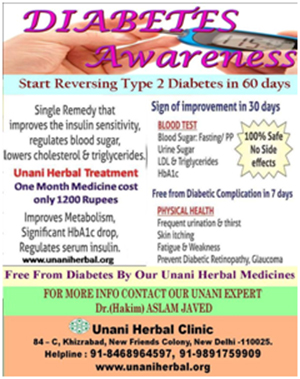What is diabetes?
Diabetes mellitus is a group of metabolic diseases characterized by high blood sugar (glucose) levels that result from defects in insulin secretion, or its action, or both. Diabetes mellitus, commonly referred to as diabetes. It was first identified as a disease associated with "sweet urine," and excessive muscle loss in the ancient world. Elevated levels of blood glucose (hyperglycemia) lead to spillage of glucose into the urine, hence the term sweet urine.
Normally, blood glucose levels are tightly controlled by insulin, a hormone produced by the pancreas. Insulin lowers the blood glucose level. When the blood glucose elevates (for example, after eating food), insulin is released from the pancreas to normalize the glucose level by promoting the uptake of glucose into body cells. In patients with diabetes, the absence of insufficient production of or lack of response to insulin causes hyperglycemia. Diabetes is a chronic medical condition, meaning that although it can be controlled, it lasts a lifetime.

Diabetes type 1 and type 2 and their facts:-
- Diabetes is a chronic condition associated with abnormally high levels of sugar (glucose) in the blood. Insulin produced by the pancreas lowers blood glucose. Absence or insufficient production of insulin, or an inability of the body to properly use insulin causes diabetes.
- The two types of diabetes are referred to as type 1 and type 2. Former names for these conditions were insulin-dependent and non-insulin-dependent diabetes, or juvenile onset and adult onset diabetes.
- Symptoms of type 1 and type 2 diabetes include
- increased urine output,
- excessive thirst,
- weight loss,
- hunger,
- fatigue,
- skin problems
- slow healing wounds,
- yeast infections, and
- tingling or numbness in the feet or toes.
- Some of the risk factors for getting diabetes include being overweight or obese, leading a sedentary lifestyle, a family history of diabetes, hypertension (high blood pressure), and low levels of the "good" cholesterol (HDL) and elevated levels of triglycerides in the blood .
- If you think you may have prediabetes or diabetes contact a health-care professional.
9 early signs and symptoms of diabetes
- The early symptoms of untreated diabetes are related to elevated blood sugar levels, and loss of glucose in the urine. High amounts of glucose in the urine can cause increased urine output (frequent urination) and lead to dehydration.
- The dehydration also causes increased thirst and water consumption.
- A relative or absolute insulin deficiency eventually leads to weight loss.
- The weight loss of diabetes occurs despite an increase in appetite.
- Some untreated diabetes patients also complain of fatigue.
- Nausea and vomiting can also occur in patients with untreated diabetes.
- Frequent infections (such as infections of the bladder, skin, and vaginal areas) are more likely to occur in people with untreated or poorly-controlled diabetes.
- Fluctuations in blood glucose levels can lead to blurred vision.
- Extremely elevated glucose levels can lead to lethargy and coma.

What are the risk factors for diabetes?
Risk factors for type 1 diabetes are not as well understood as those for type 2 diabetes. Family history is a known risk factor for type 1 diabetes. Other risk factors can include having certain infections or diseases of the pancreas.
Risk factors for type 2 diabetes and prediabetes are many. The following can raise your risk of developing type 2 diabetes:
- Being obese or overweight
- High blood pressure
- Elevated levels of triglycerides and low levels of "good" cholesterol (HDL)
- Sedentary lifestyle
- Family history
- Increasing age
- Polycystic ovary syndrome
- Impaired glucose tolerance
- Insulin resistance
- Gestational diabetes during a pregnancy

Unani Diabetic Diet Chart
MEAL |
FOODS TO EAT |
Early Morning |
Options:
|
Breakfast |
Options:
|
Pre-Lunch |
Options:
|
Lunch |
Options:
|
Evening Snacks |
Green tea without sugar or artificial sweeteners. You can have one small bowl of bhel puri or baked snacks. |
Dinner |
Options:
|
Before Bed |
One glass of warm milk with a pinch of raw ground turmeric. |
Nomination form for 2017 Global Awards :
http://www.unaniherbal.org/nomination-form.html
For more information you can also follow us on:

 If you wish to cancel your subscription to this newsletter click here
© Copyright 2014 Unani Herbal
If you wish to cancel your subscription to this newsletter click here
© Copyright 2014 Unani Herbal

